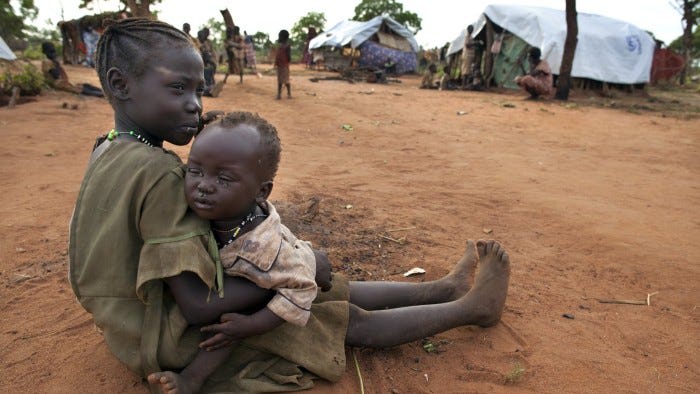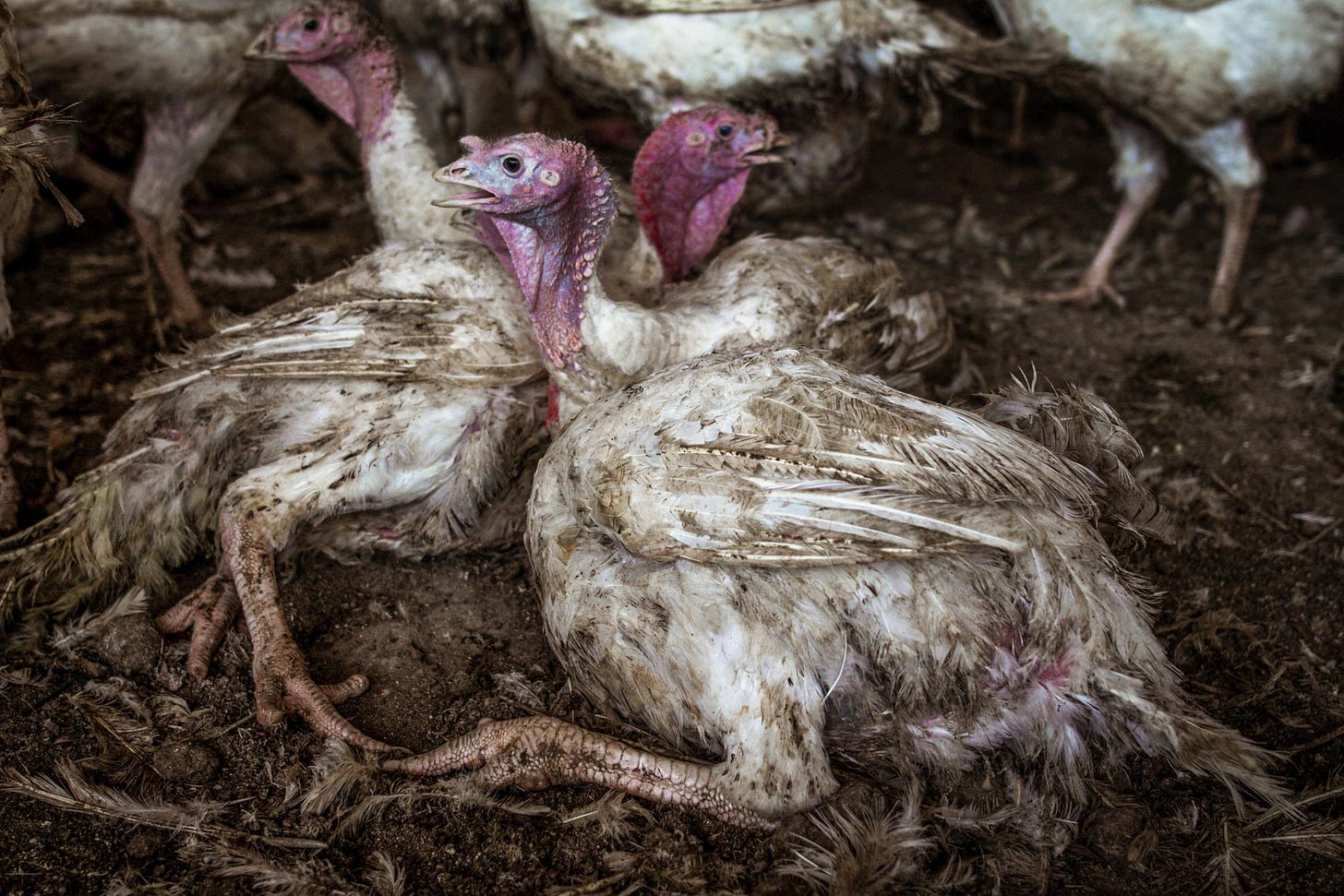
Happy holidays, readers! I hope you all have a wonderful thanksgiving. Spend time with family and loved ones. Eat well. Be thankful. And speaking of being thankful, let’s philosophize about that. Given the holiday, you will probably have to think about that perennial question: what are you thankful for?
The way this question is framed creates in our minds an addition problem: before we are asked the question, we started with zero in mind–a blank canvas if you will. Once asked, we reflect and add things to that blank canvas of the things that we feel thankful for. But it might be better to reframe this question and turn it into a subtraction problem.
In order to answer the thankfulness question properly, it might be more helpful to ask another question. Instead of answering “what am I thankful for?”, try answering “what would my life be without x?” Go on. Think about how wretched your life would be without having constant access to good food and safe drinking water, a roof over your head, or that Netflix subscription. By reflecting on what life would be like without x, we are able to gain a better sense for how much x improves our lives (or makes it worse).

Now consider this: there are hundreds of millions of people currently living life in those conditions. At the time of writing, 700 million people currently live on less than US$2.15 a day. A person living in extreme poverty makes less money a year than the typical middle-class American makes on a weekly salary! Each year, about 5 million children die each year before they even reach their fifth birthday, mostly due to preventable causes that we have already addressed in affluent countries like malaria.
It’s very easy to feel helpless in the face of such enormous suffering and death. But what if I told you that right now as you read these words, there is somebody (most probably, a child under five) across the world from you who is alive and breathing and has a family that loves them, but is destined to die, and there is something you can do to save their life?
“Okay,” you say, “but surely I’m not going to volunteer to travel and be part of some humanitarian aid effort. I have a lot on my plate already!” But that’s the good news: you don’t even have to do all that to save a human life. In fact, you really don’t have to make a huge sacrifice at all!
Part of what this growing Effective Altruism movement focuses on is relying on rigorous, cost-effective analyses and evidence to identify which charities in the world have the most impact per dollar donated. It turns out because addressing issues from afar is more neglected than issues closer-to-home and there are dirt cheap life-saving interventions with dozens of randomized controlled trials proving their efficacy, your dollar can go much further overseas!
GiveWell is an impact-based charity evaluator that conducts these kinds of rigorous cost-effective analyses to identify which charities actually have the most impact per dollar spent, and they maintain a short list of charities they recommend based on their research. It turns out, it costs between $3,500-5,000 to save one human life in expectation if donated to the charities they recommend. This amounts to 10% of the typical middle-income American salary, which still leaves enough leftover to live a fairly comfortable life. That’s an incredible opportunity! Even if you don’t plan on giving that much right off the bat, even giving a few dollars to these highly cost-effective charities goes a long way.

The Drowning Child: Given that we live in a unique time period where we could so easily do something to impact the lives of others far away without sacrificing much for ourselves, it poses an ethical question: are we obligated to do so? In a famous 1974 paper, philosopher Peter Singer argued that we do, giving the analogy of walking by a shallow pond where you encounter a drowning child, and you could easily wade in and pull the child out, thereby saving their life. Problem is: if you do, you will ruin your shoes and maybe even your expensive cell phone. You do not have enough time to take your shoes off or salvage your cell phone. Thus, your decision to go in and pull the child out is the same as incurring a relatively small financial burden on yourself, since after you do this you will need to buy a new cell phone and pair of shoes. Should you still wade in and save the child? Most people would think so, and in fact, if anyone failed to do so they would be considered moral monsters. Yet, our failure to donate in order to save a child who is far away is analogous to walking past the drowning child because we would rather not have to incur that relatively minor financial burden. The only difference is that in one case, the child is in front of us, and in the other, they are far away and out of sight out of mind. But upon reflection, the premise that one’s spatial proximity to you makes a morally relevant difference–despite the outcome being the exact same otherwise–is untenable.

While thanksgiving might be a jolly time for us, there are so many in the world who don’t get to have that luxury. Especially all the turkeys we eat, where around 45-46 million will be farmed for thanksgiving and another 22 million for Christmas–that’s about a third of all turkeys farmed each year. 99.8% of them will be factory farmed, meaning they will be raised indoors in overcrowded conditions, subject to painful mutilations, born into oversized bodies, and so, so much more that can’t fully be described in this essay. That we gleefully celebrate the holidays that’s meant to be a time of cheer and joy while simultaneously condoning bloodshed and violence on the same dinner table–while practically an invisible blindspot for most of us today–will no doubt be viewed as a gleaming paradox for our future descendents looking back on our times.
The plight of nonhuman animals is one of the most overlooked issues of our times. One thing we can do to help them is to refuse financially supporting products that directly causes more of them to be born into a short, typically horrendous life. Shifting our diets in the direction of a more plant-based diet isn’t just a symbolic act to signal that you personally don’t endorse violence towards other sentient beings, it really does have real-world outcomes for animals. A plant-based diet can typically be expected to prevent around 105 farm animals from being born and slaughtered every year–that’s supply and demand in action!
But I get it. Giving up a lifelong habit is no walk-in-the-park. The good news is that there is another way to help animals without even making dietary change! Not only that, it can have an even bigger impact for animals than even going vegan. And that’s by choosing to donate to the world’s most cost-effective animal charities. The organization FarmKind has a compassion calculator on their webpage. Much like carbon offsetting, you can answer some questions relating to your diet, enter that in the compassion calculator, and see how much you can donate in order to help the same amount of animals that you currently cause harm to through your diet. For the typical consumer, this turns out to be a monthly donation of $23, which means donating this much can have the same impact as going vegan!
Furthermore, Animal Charity Evaluators (ACE) is another impact-based charity evaluator conducting rigorous cost-effective analyses to identify which animal charities help the most animals per dollar, and recommend those charities based on their research. The impact per dollar for these charities is truly something astounding! Here are some examples of what $1 can accomplish:
- Animal Welfare Observatory: helps 32 animals.
- Aquatic Life Institute: prevents what likely could be torture-level suffering to 5000 shrimps.
- Shrimp Welfare Project: prevents what likely could be torture-level suffering to 1400 shrimps.
- The Humane League: frees 10-12 egg-laying hens from battery cages.
So feel guilty about condemning a turkey for thanksgiving but aren’t yet fully ready to commit going vegan? Consider doing the next best thing and donating!
Of the $450-500 billion dollars that Americans donate each year to charity, only 0.2% goes to the most cost-effective charities in the world. This is a huge shame, given that we could help so much more people and animals if only we chose wisely where to donate our money to. Where we donate our money is even more important than how much we give, since the most cost-effective charities in the world are hundreds or thousands of times more cost-effective than the typical charity! Choosing wisely where to donate our money to is like turning a $100 donation into a $10,000 donation, since that $100 can accomplish the same impact when donated to a very good charity as donating $10,000 to a merely good charity.
This Thanksgiving, we shouldn’t just have gratitude. We need to give back to those living in situations that are significantly worse off than us. The impact that you can have as an individual for such little money is far greater than you could even fathom. I hope you will join me and thousands of others in not only being thankful for what we have, but also to give back and create more beings in the world who will be far more thankful and better off thanks to your aid. These holidays, let’s increase the amount of thankfulness in the world. And by doing so, we don’t lose. What we gain in return is a newfound sense of meaning and fulfillment, for psychological studies show that giving to make the world a better place is one way to be more satisfied and happy with our own lives.
